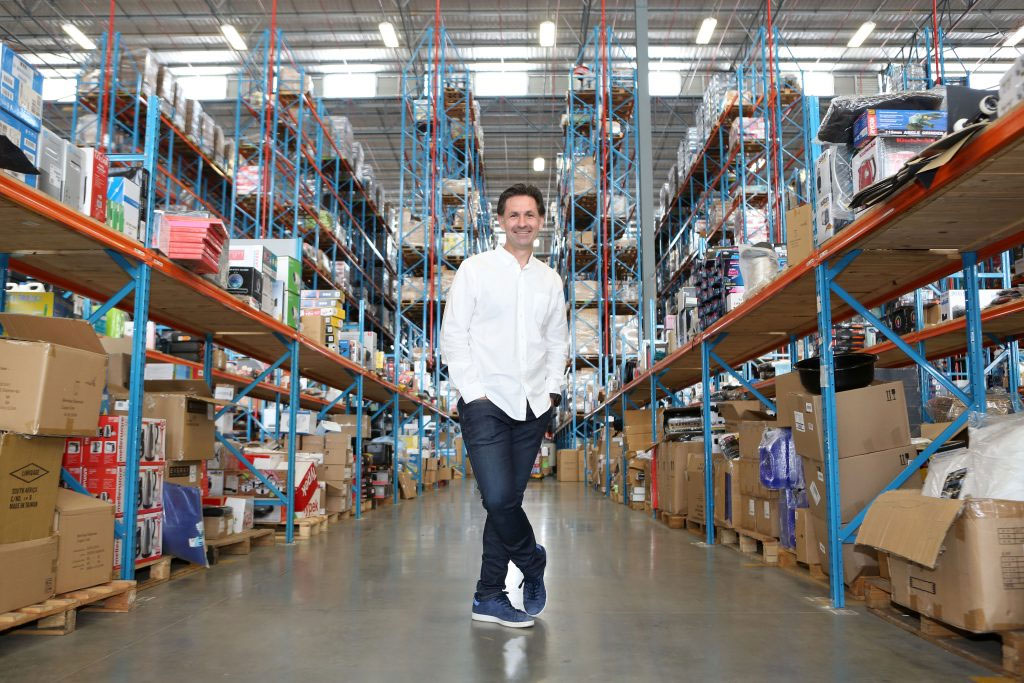
Online retail store Takealot.com has been growing at a compound rate of 107% for the last four years as younger South Africans slowly but surely become more comfortable with online shopping.
Despite this rapid growth, the seven-year-old company, which turned over R2,3bn in the year to February, is not yet profitable and will not be within the next year.
What is the line between profitability and loss? Very simply, it’s scale and efficiency, says Kim Reid, CEO of Takealot. “Once you have reached scale, as Amazon has, profits come fast. But building scale requires funds.”
In April, Naspers injected R960m into the company, in the process taking its stake in the business up to 53% on a diluted basis, while long-term shareholder Tiger Global reduced its stake to about 36%. Management and staff own the balance.
The Naspers funds will be invested in organic growth (people, technology and processes) and should take the company to the point that it is self sufficient — in other words, profitable, says Reid. However, he is not willing to say how long this will take.
It goes without saying that Naspers has faith in the business. The South African media and Internet giant is not shy to sell off its investments or, indeed, up stakes in them when the opportunity is right.
In March, Naspers sold its 36,4% stake in Middle East retailer Souq.com to Amazon.com for an undisclosed amount in a deal that Goldman Sachs called “the biggest ever technology merger and acquisition transaction in the Arab world”.
In 2014, Takealot raised US$100m from US-based hedge fund Tiger Global Management, which is heavily invested in the online world and which was involved in the (re)launch of Takealot in 2011.
In October of that year, Takealot merged with the Naspers-owned Kalahari, and the following year Naspers contributed another R716m to Takealot, bringing its stake to 42%, alongside Tiger.
As with previous investments, the latest round of capital will be used to support the organic growth of the business rather than to make any headline-generating acquisitions or investments.
To understand how cash hungry this business is, consider the scale of the operation: Takealot operates from two 30 000m² warehouses in Johannesburg and Cape Town. These support the core Takealot brand, as well as stablemate Superbalist, which is the second-largest online fashion store in the country, after Zando.
The third and fourth legs of the business are the restaurant food delivery service Mr D Food, South Africa’s largest restaurant food delivery service, and Mr D Courier, its point-to-point courier service.
But back to the warehouses: of the thousands of items stocked by Takealot, just 17% are from third-party vendors, which means the company holds millions of rand worth of stock at any given time.
Managing this becomes tricky when growth is compounding at 107% annually. The company’s headlong rate of growth is best illustrated through its Black Friday sales. “In 2011, we turned over R1m, in 2015 we turned over R17m and last year R56m. So you can appreciate that our scaling problem is vast.”
In the IT world, scale is added by plugging in another server somewhere, but for online retailers who live and die by the effectiveness of their supply chains, adding scale such as a new warehouse is not as easy.
Thus investment will be made into people, technology and processes. When it comes to people, Reid employs according to the Warren Buffett philosophy: “Integrity, intelligence and energy — and not two out of three traits, three out of three.”
Beyond that he does not set out to hire retailers specifically. “My head of buying comes from Bain — she is darn clever. I’ve got chemical engineers and people from the auto industry, and technology geeks that specialise in artificial intelligence — they are the people that develop the algorithms that make recommendations based on your previous browsing history which helps to drive sales. We have a mix of industries and intellects. If I hired retailers, then we would be building just another retail business.”
At the moment, Takealot employs 1 200 people, up from 25 in 2011. Roughly half of them are involved in the supply chain, while another 200 are employed in the call centre. The Mr D Courier service retains at least a thousand “freelance” drivers at any one time.
Constant re-engineering of processes, like picking, packing and improving delivery times, reduces costs and improves customer service. “E-commerce is a tough business — we deal with every part of the value chain, including the consumers,” says Reid.
For now, he is not too concerned about South Africa’s low economic growth rate. “We are fortunate in that we are doing the disrupting and cannibalising — our competitors are in retail, not other online retail stores.”
E-commerce penetration in South Africa is at about 1%, compared to 13% in the US or 15% in China. No one knows what South Africa’s potential is, but “we see the gap [between 1% and say 8%] as our opportunity”. In South Africa’s favour is its youthful demographics and mobile adoption.
That said, he does expect the compound annual growth rate to moderate to 30%, down from its current lofty levels.
- See also: Naspers to pump R1bn into Takealot
- This article was originally published on Moneyweb and is used here with permission




